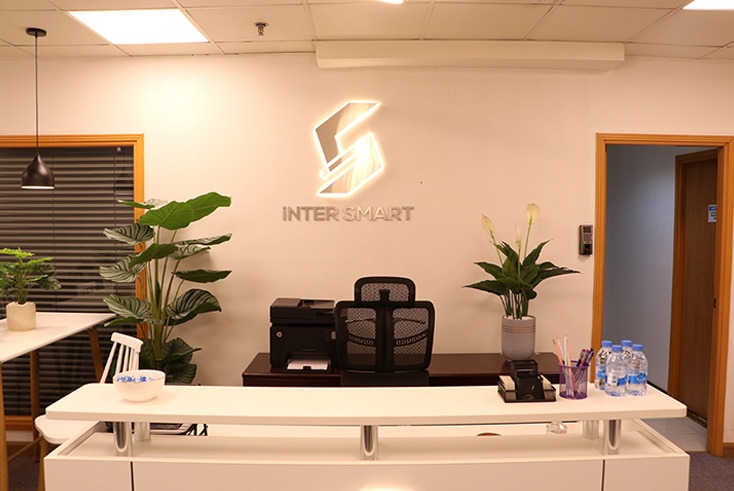Choosing the Right Mobile App Architecture: MVC vs. MVVM vs. MVP
- Date: 16 / February / 2024
- Post By: Admin

The selection of the right mobile app architecture is key to the success of any software project. Given the different architectural patterns under consideration, Model-View-Controller (MVC), Model-View-ViewModel (MVVM), and Model-View-Presenter (MVP), mobile app developer Dubai has the task of deciding upon the pattern that best meets their needs. This blog ‘Choosing the Right Mobile App Architecture: MVC vs. MVVM vs. MVP’ will walk through the major differences between MVC, MVVM, and MVP architectures and their best situations of usage. Through the comprehension of the workings of each architectural pattern, developers can make sound choices based on the scalability, maintainability, and efficiency of mobile applications.
Comparing MVC, MVVM, and MVP
Let us compare the three major mobile app architectures:
Model-View-Controller (MVC):
The MVC pattern, a fundamental architectural pattern, separates applications into three components: Model, View, and Controller which work together. Model is the application's logic and data, and deals with data management and business rules. The View presents the user interface (UI) to the users generates the display of the data from the model, receives the commands of the users and passes them to the controller. The Controller acts as a go-between, overseeing user input, adjusting the model to fit, and displaying the results on the screen. MVC promotes the division of labour, which allows the separation of various pieces of functionality and thereby facilitates both the maintenance and the testing of applications.
Advantages of MVC: The separation of concerns in MVC guarantees that the different parts of an application, for example, data management, business logic, and user interface, are ordered tidily, resulting in code that is easier to maintain and scale. Its capability of having multiple views of the same model facilitates code reuse, leading to fewer repeated parts and faster development. Additionally, the popularity of MVC coupled with the large community behind it gives programmers plenty of tools, guides and libraries to choose from, making it easy to develop projects efficiently with the best practices available out there.
Model-View-ViewModel (MVVM):
MVVM is an improvement of the existing Microsoft offerings which comes with a ViewModel component that focuses on the separation of concern. Like MVC, MVVM has a Model representing data and logic, and a View to organize the UI. The ViewModel serves as a middleman where it synchronizes two-way data binding between the View and the Model. It shows the data from the Model to the View and cultivates the user input, creating a harmonious connection between the UI and the underlying data. MVVM provides simplicity in UI development, testability and scalability by abstracting the view from the application logic.
Advantages of MVVM: Model-View-View Model's clear separation between the user interface and business logic makes code maintenance easier and collaboration of developers is more simple. The support of the architecture for unit testing of view models by itself without the influence of the UI makes it possible to produce complete testing, which results in superior software and reliability. Importantly, MVVM’s two-way data binding feature self-updates the UI in response to any changes in the data held, which simplifies the synchronization tasks thereby increasing the application response time.
Model-View-Presenter (MVP):
MVP, a variation of MVC, puts a further deal on the separation of concerns with the introduction of the Presenter. It retains the Model that encapsulates data and logic as well as the View to display the UI. The Presenter is like a go-between, handling user input, changing the Model, and asking the View to show what has changed. MVP allows one to unit test the application, follow the principle of modular development, and reuse code by storing UI logic in the Presenter. Also, MVP gives distinct separation for UI and business logic that, in turn, increases the apps’ maintainability.
Advantages of MVP: The testability of MVP is through the decoupling of view and business logic, affording inclusive testing of independent components, thereby, producing strong applications without bugs. The modular development approach of the architecture with its components having specific responsibilities, makes code organization easy and allows reuse, which in turn leads to agility and decreased development time. Moreover, MVP helps to ensure code reusability as multiple views controlled by the same presenter can be utilized in building a single application with minimal repetitiveness.
In summary, all three (MVC, MVVM, and MVP) have responsibilities sharing similarities but each is unique which implies they have their own advantages and trade-offs. Programmers must pay attention to factors like project requirements, team skills and platform compatibility when deciding which architecture is appropriate for their mobile applications.
How to Choose the Right Mobile App Architecture?
The right architecture choice for a mobile app involves some careful consideration of numerous factors that ensure the success of your project. Our app development company in UAE shows you how you can make an informed decision:
Consider Project Requirements:
Assess your project requirements, in particular scalability, maintainability and testability. For an app that requires regular updates and changes, you may find MVVM or even MVP better because they are easily flexible. Alternatively, if you emphasize the simplicity of use or ease–of–use nature, MVC could turn out to be a rather rewarding option.
Evaluate Team Expertise:
The selection of an appropriate architecture is based on evaluating the capabilities and preferences of your team. If the knowledge of a particular pattern by your team proves to be an advantage that can ensure better results, then it may benefit you. Further, look at the learning curve for each architecture as well as if your team can accommodate a new approach.
Analyze Platform and Tools:
Consider the required platform and development tools for your mobile app. Moreover, some architectures can match better with particular platforms or frameworks and may perform more efficiently as a result. For instance, some architectures could provide better features for cross-platform development or compatibility with well-known libraries and frameworks.
Considering the various factors and ensuring that they are aligned with project goals and constraints helps you choose an architecture suitable for your mobile application development. Keep in mind that there is no universal solution, and adaptability and maintainability should be prioritized for the long-run of your application.
Frequently Asked Questions (FAQs)
Q: Which architecture gives the best testability?
A: The testability is better with MVVM and MP when compared to MVC architecture. They allow easier unit testing as they separate the UI logic from the business logic.
Q: What architecture is better for big projects?
A: Large-scale projects typically need MVVM or MVP architectures since the separation of concerns is much better, allowing them to change and expand over time.
Q: Are there any limitations that are worth mentioning for each architecture?
A: MVC can result in Massive View Controllers and component coupling. Complexity can be introduced with the ViewModel layer in MVVM. MVP can lead to a multiplication of Presenters.
Recent Blogs
Tired of being associated with unprofessional and inexperienced companies? Well then, you have good reason to be here. As one of the top most web designing companies in UAE
- DESIGN
- DEVELOP
- DELIVER
